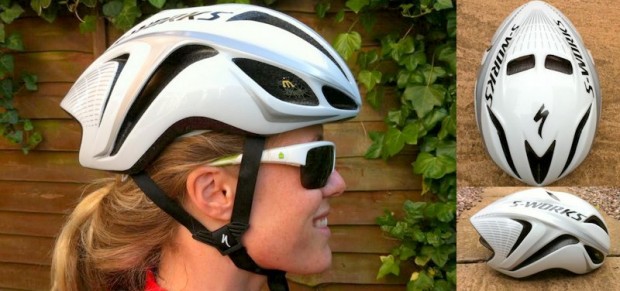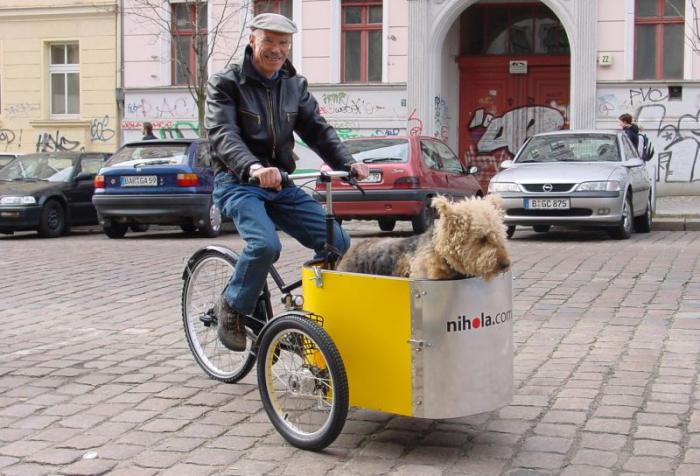
In the past, serious road cyclists had two main helmet styles to choose from. Conventional helmets tended to focus on maximising ventilation while minimising weight, and were the lid of choice for any race or training ride that involved cycling in a pack. Aerodynamics seemed of secondary concern where riders were generally grouped closely together, taking turns to tuck into each other’s slipstream.
The big cycling manufacturers directed their aerodynamic research towards the non-drafting race formats – time trial events where riders are not allowed hitch a lift on someone’s wheel. The results were futuristic in appearance: disc wheels, aero tubing on frames, handlebar extensions, skin suits and of course, the sci-fi warrior helmet, complete with visor and long tail.
However, in recent years designers have starting transferring aero features that started out in the velodrome across to their standard road racing frames. It makes sense: riders in small break away groups are practically time trialling anyway, and for stages with sprint finishes, the smallest of aero advantages might make the difference.
The helmet is the latest front in this aero war. Long “sperm-hats” as they are affectionately known, are often too hot for a full day in the heat, and their long tail means they lose much of their advantage when the rider frequently changes position on the bars. The Evade helmet from the high end Specialized S-works range is their contribution. The aim is to keep much of the aero advantage from their top end TT2 time trial helmet, while keeping your head cool enough to survive a long day in the saddle. The Evade is quite narrow with a slightly elongated profile, but is much shorter than the TT2 and includes a number of sizeable air vents.
Readers with an interest in amateur age-group triathlon racing, where drafting is illegal may well consider investing in a helmet like this. It won’t turn heads like a space aged TT lid will (no-one will accuse you of being pretentious) but if Specialized’s claims are to be believed, it may save you up to 46 seconds over 40km, compared to their top end road helmet (the Prevail). Of course, the amount of advantage depends largely on the wattage that the rider can generate and sustain.
The gains that Mark Cavendish might achieve at 50 km/hr are likely to be greater than the average athlete puffing their way around their local triathlon. And all the technology in the world won’t change the fact that when it comes to aerodynamics, the position of the rider is by far the biggest variable. If you can hold a low profile position for the entire race, and generate enough power to create significant apparent wind, then it is probably time to think about a helmet like this.
So, how did it perform on test? Well, the first thing to note is that from a fit point of view, this helmet is completely un-noteworthy, which is a very good thing! You clip the chin strap, turn the dial to tighten at the back of the head and voila – it just works. The straps are easy to adjust, the padding system is simple and effective. Of course, aero-dynamics are impossible to test by just riding, but there is a significant drop in noise compared to my standard road helmet. Air seems to flow over the top, minimising the turbulence that can make for a noisy ride. This was particularly apparent when tucked into an aero position on my time trial bike.
Since this helmet is a compromise between aerodynamics and ventilation, and since aerodynamics are difficult to test, ventilation perhaps becomes more important than it should be. It is true that this helmet retains more heat than my standard road helmet.
However, since most of my races are in the UK, it is unlikely to bother me on all but the clammiest days of summer. If you intend to spend a holiday toiling up Alpine climbs in July, then go for maximum ventilation (the aero benefits are significantly reduced at lower speeds anyway). That said, the arrangement of vents on the Evade, does work to suck air over the head and out through the rear exhaust vents. It really doesn’t do badly here at all.
Verdict:
In truth, this is a very fine helmet that has already found a place on the professional cycling circuit. For the average cycling enthusiast, it is probably mostly of interest to road racers who fancy breaking from the peloton from time to time, or who want to maximise every watt they put into their sprints. Short course time trial riders will probably be turned off by the inevitable compromise in its design – if the TT2 is marginally faster, then that is what the speed junkies will go for. However, I can see this being a good option for many improving triathletes who prefer to shy away from the outlandish image of the full TT rig, but still want a little help from their helmet. Perhaps its greatest take up will be amongst long distance / Ironman athletes travelling to a warm weather race, since it offers a way to keep a little cooler while only making marginal sacrifices on time – in these cases, compromise may be a very wise choice indeed.
Pros:
Good looks
Aero advantage over standard road helmets
A nice compromise between ventilation and speed
Cons:
Not ideal for hot weather climbing
A compromise piece of kit will always struggle to perform at the extremes.
Price: £160
Stockist: Evans Cycles
Liked this?
We’ve also been busy reviewing the Sportful Hotpack Ultralight Vest and have had a quick peek at the Sugoi Evolution Team Jersey and Shorts.
And if you’re stuck for snacks in the house, why not try baking out scrum my protein powder Apple, Flax, and Cinnamon Donuts.





